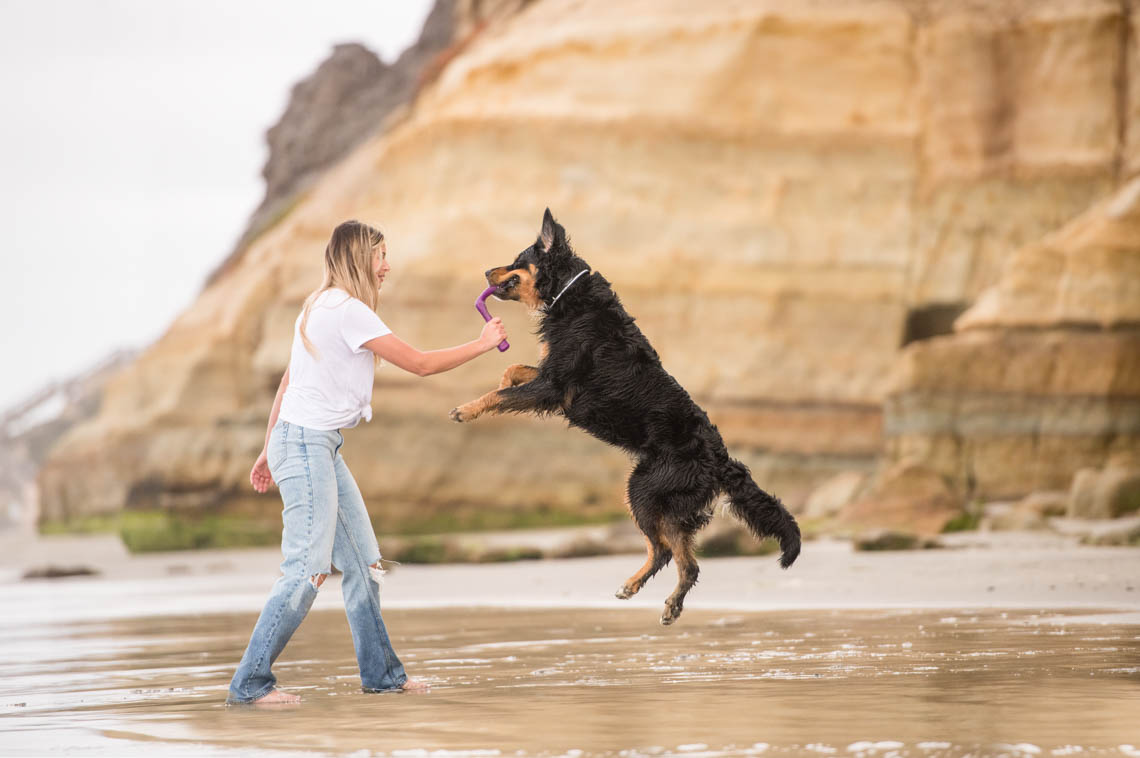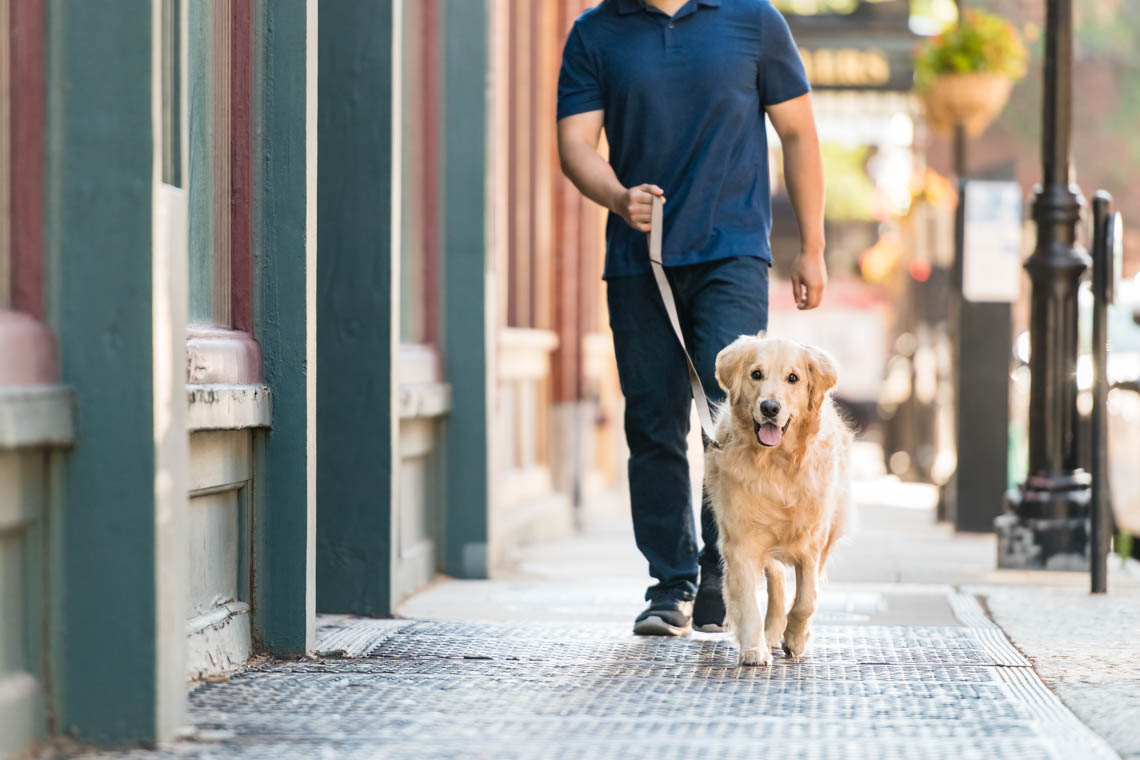When Things Go Wrong: Issues with hiring people photographers instead of pet photographers
I’m going to jump straight out of the gate on this one, because passion and expertise are exploding out of me here…
People photographers = people first, dogs second.
Pet photographers = dogs first, people second.
There, I said it. And it’s important you understand it, because sometimes, dogs just don’t want to interact how you need them to. You can tell a person what to do, but you have to have the know-how to pay attention to the dogs — that’s the key factor for hiring the right photographer for the job.
Check out the top four issues I see when pet brands hire people photographers instead of pet photographers…

1. A lack of flexibility in the moment
“Sit!” “Stay!” “Play with this toy!”
*Internally giggles* because I can hear it now. Your dog model isn’t playing with the toy you need to shoot or won’t follow his commands like his mom said he would.
Rut roe.
This is where pet photographers do their absolute best in model calls, because the better a dog is trained, the faster we work. The faster we work, the more money we save brands. The truth of the matter is dogs can be well trained in one environment but not in a new environment. New plays, new things, new toys, there is a natural unpredictability that comes when working with pets.
This kind of thing happens more than you might expect. I’ve had dogs who didn’t want to play with certain types of toys, cats who didn’t want anything to do with the product we were shooting, and dogs who were so darn excited to be at the beach, they took off a quarter-mile down the sand to chase the seagulls.
So, we pivot. We have backups, high-value treats, and ideas for how to make things fun for the animals we are working with.
A great pet photographer expects dogs at different energy levels and has the training and expertise to recognize where that energy is best suited for the shoot. People photographers may panic but pet photographers adapt, adjust, and enhance the behaviors they want.

2. Misunderstanding canine body language
At a photoshoot, the photographer and the dogs we’re working with need to be able to communicate. This is extra-critical when working with senior dogs or dogs with special needs.
Most people photographers see “whale eyes,” lip licking, and tight mouths as cute, whereas pet photographers know this is not good and the dog is not enjoying himself. There’s an exceptional difference between:
- A dog lying on a bed and a dog lying on a bed with his hips straight.
- A dog with his ears down or turned to the side and a dog with his ears up and facing forward.
A pet photographer has the ability to understand dog body language and the expertise to look for ways the dog is trying to communicate. These fine print details are what add up to the brand image you want to convey.
3. Location scouting from eye-level, not dog-level
People photographers look at locations from eye-level, but pet photographers scout from ground-level. When I find a location that looks great, I drop to the ground to see how the angles will look when photographing the dogs. A beautiful flowering tree or cool textured wall might look great five feet in the air but what does it look like from the dog’s perspective? Hint: not always great. The same can be said for locations that don’t look picturesque from eye-level, too. My favorite locations are often overlooked by people photographers because they’re not down on the ground like I am.
I like to call this the art of getting messy on a photoshoot! Mess is where the magic happens for so many pets — and commercial shoots are no exception!
Pet photographers understand that 95% of their job will be spent on the ground. We are prepared for lying in city streets, getting covered in dirt and mud, and occasionally, being fully immersed in pig pens to capture the perfect brand image.

4. Not Minding the Light
When it comes to lighting, there are two subtle differences in humans and dogs that can make or break your brand’s imagery.
Catchlights: these are the sparkly reflections from the light source that you see in the subject’s eyes. They’re wildly important because without them, the eyes look dark and lifeless — which is never good. Light reflects a bit differently in human eyes versus dog eyes, though, and you need to pay close attention to where the catchlights sit. For example, a studio light catchlight that’s smack-dab in the middle of a dog’s pupil is no good; it’s better if it’s off to one side.
Snouts: The angle of light you would use on a human doesn’t always work with a dog because their facial structure is so different. Longer noses require different angles than short ones and vice versa. Side lighting can be really interesting with humans but the way most dogs’ noses cast shadows, it’s important to watch the angle that’s being captured.
A professional dog photographer is more than just a photographer.
Professional dog photographers know how to deal with all kinds of dogs and situations and should have experience with dog training and behavior.
For more great insight about pet photography, check out the creativity we’re pioneering on our blog!


Leave a Reply